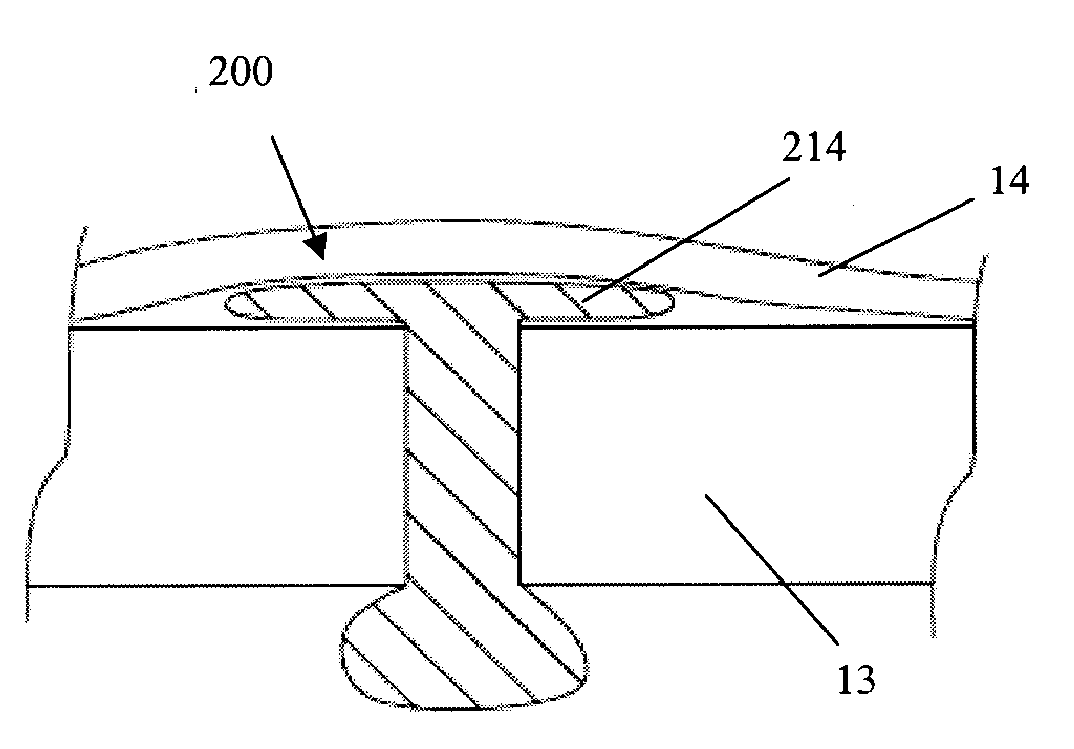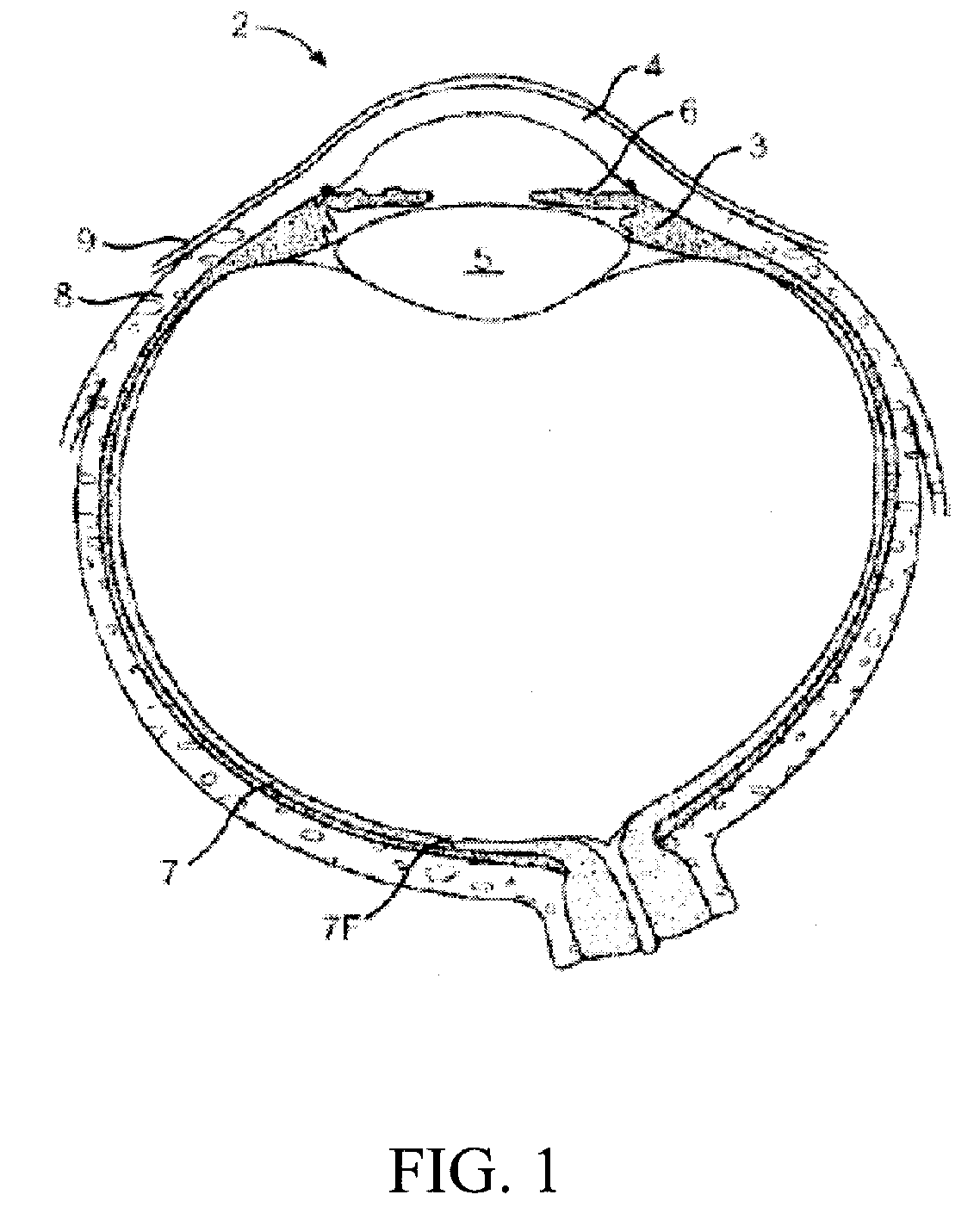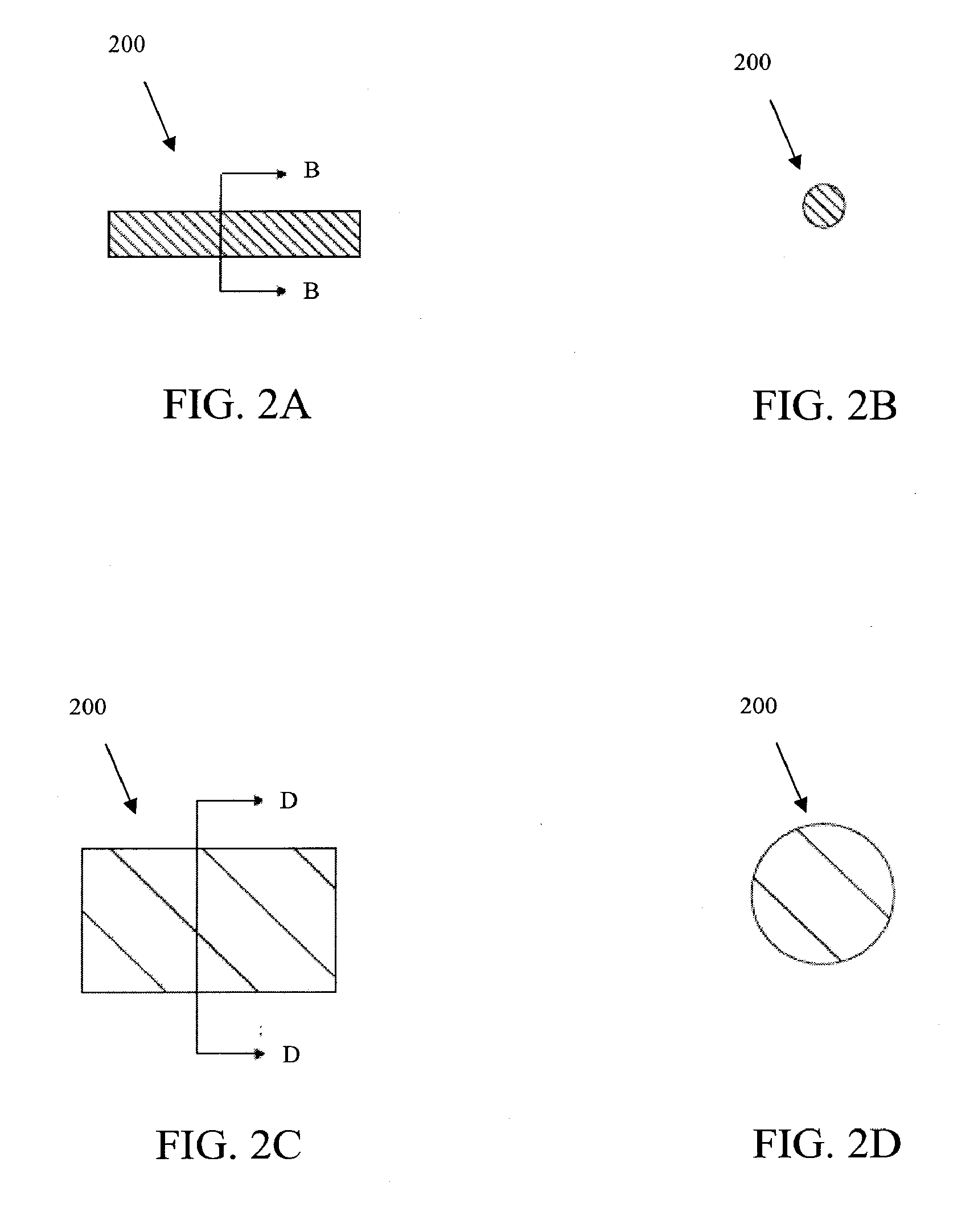Wound Closure Devices, Methods of Use, and Kits
- Summary
- Abstract
- Description
- Claims
- Application Information
AI Technical Summary
Benefits of technology
Problems solved by technology
Method used
Image
Examples
example 1
Preparation of Device
[0082]In some embodiments, a collagen sheet is cut into the size 2 mm by 2 mm by 15 mm, then the cut piece is compressed in two steps such that the final cross-sectional area becomes less than 0.5 mm by 0.5 mm. The compaction is typically done at a room temperature or a temperature between 30 and 37 degree C. Then, the compressed collagen (either rectangular or circular cross-sectional shape) rod is inserted into a tubular mold, preferably Teflon tube, non-adherent polymeric or non-polymeric tubes.
[0083]Polyethylene glycol (PEG, preferably the ones with molecular weight between 1,000 and 10,000) is used as a binder. The PEG is melted at a temperature between 30 and 70 degree C., then the PEG can be sucked into the tube mold containing the compacted collagen rod. The suction can be done by vacuum, wetting by surface tension, or injection. The PEG binder solidified when the temperature drops below its melting temperature. Then, the solid-bound collagen tube is de-...
example 2
Determination of Leakage Rates in Rabbit Eye Using Device
[0088]FIG. 18 illustrates a graph showing the leakage rates of fluid through a wound site in a rabbit eye, at different wound conditions, using one embodiment of the wound closure device described herein. The first 20 minutes just an infusion line was connected to the rabbit eye and was pressured at 35 mmHg. The leakage rate was determined by measuring the flow of the infusion line. At minute 21, a cannula was placed into the wound site and the leakage rate stabilized after about 10 minutes. The leakage rate from the open cannula was measured over 20 min. At minute 60, the cannula was plugged with the wound closure device and the leakage rate declined to base value (the value before the placement of the cannula). After applying the wound closure device, the leakage rate did not increase from the base value, which indicates sealing of the wound site. After removal of the wound closure device, the leakage rate increased rapidly ...
PUM
 Login to View More
Login to View More Abstract
Description
Claims
Application Information
 Login to View More
Login to View More - R&D
- Intellectual Property
- Life Sciences
- Materials
- Tech Scout
- Unparalleled Data Quality
- Higher Quality Content
- 60% Fewer Hallucinations
Browse by: Latest US Patents, China's latest patents, Technical Efficacy Thesaurus, Application Domain, Technology Topic, Popular Technical Reports.
© 2025 PatSnap. All rights reserved.Legal|Privacy policy|Modern Slavery Act Transparency Statement|Sitemap|About US| Contact US: help@patsnap.com



